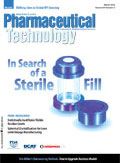Consumers Need Access to Lower-Cost Biogenerics
To best carry out the vision of Hatch-Waxman, Congress must act now on biogenerics.
Twenty-five years ago, the US Congress passed the Hatch–Waxman Act to create an abbreviated process for generic-drug manufacturers to get safe and affordable medicines to consumers faster. The law's authors, Rep. Henry Waxman (D–CA) and Sen. Orrin Hatch (R–UT), realized their vision of a balanced regulatory approach that would help control healthcare costs by allowing lower-cost generic versions of a brand medicine to come to market while still encouraging innovation.

Kathleen Jaeger
The incentives contained in the Hatch–Waxman Act have fostered unprecedented research and development of new pharmaceuticals by providing innovator companies with additional market protection from competitors. At the same time, the law has led to remarkable savings through the use of generic drugs, which saved the US healthcare system $734 billion over the past 10 years, according to IMS Health.
What Hatch–Waxman did not address was the commercially viable biotechnology industry that was still a decade away. The consequence is that, while more than 30 countries around the world make affordable generic versions of biopharmaceuticals available, the US Food and Drug Administration has yet to put in place an approval process for biogeneric products
The need to create an abbreviated approval process for biogenerics has never been greater. Currently, more than 150 biologics medicines are on the market, many of which have either lost patent protection or soon will be off patent. In addition, inflation in health spending and concern about patient access to affordable drugs demand that we create a workable biogenerics approval pathway that will not only bring lifesaving medicines to patients in need, but that will also save our healthcare system billions of dollars. Except for medical imaging, the cost of biologics is rising each year faster than any other medical service. The cost of a single biopharmaceutical can be staggering, putting treatments out of the reach of many Americans. For instance, the lung cancer drug, Avastin (bevacizumab), costs about $100,000 per year and Remicade (infliximab), used for rheumatoid arthritis, can cost about $20,000 annually.
Seeking a balance between access and innovation, Congress crafted subsequent legislation that gave FDA the authority to create an approval pathway for biogenerics. Unfortunately, the legislation created a pathway in name only and failed to sufficiently address certain measures that lead to long delays before the generic versions of biologics can come to market.
Under Hatch–Waxman, innovator companies are awarded one five-year period of marketing exclusivity for a novel drug product in addition to a patent extension for that same product, resulting in a maximum of 14 years effective market protection for each patent. These market protections are intended to supplement the robust protection of the drug product's patent portfolio. These protections have been proven successful in providing generic medicines to consumers while stimulating brand innovation. However, legislation pending in Congress would extend the five-year exclusivity provision to 12 years for biological products. The legislation also contains a loophole that would allow innovators to make small incremental changes to certain existing products, in effect "evergreening" their patent protection and preventing biogenerics from entering the market for an additional 12 years. This loophole could encourage a life-cycle management strategy for existing products, thereby reducing incentives for innovation that create novel classes of medicine and blocking access to affordable biogenerics.
The Generic Pharmaceutical Association (GPhA) has long advocated for a workable biogeneric approval pathway. The pending legislation must be improved to bring biogeneric medicines to consumers sooner rather than later through a science-based approval process, timely resolution of patent disputes, and market exclusivity provisions consistent with the Hatch–Waxman regulatory model. Until its deficiencies are corrected, consumers, employers, the government, and healthcare insurers will not realize the balance of access and innovation created by Hatch–Waxman.
The pressure to create an acceptable approval pathway for biologics will not abate. Biologics represent a growing percentage of the total US pharmaceutical market. Biologics grew to 15%, or $45 billion, of national pharmaceutical sales in 2008, up from 12%, or $27 billion, in 2002, according to FDA.
In addition, US biologics approvals represent a large percentage of total new drug approvals than ever before. More than 40% of the products now in Phase III development are biologics. And it is estimated that nearly half of the products approved by FDA in 2012 will be biopharmaceuticals.
Many nations and authorities, including the European Union, Canada, Japan, and Australia, have already enacted abbreviated approval pathways for biologics. It is time for Congress to create a comparable regulatory paradigm in the US. Legislation pending in Congress must be improved so that consumers can realize the potential of affordable biologic medicines.
Kathleen Jaeger is president and CEO of the Generic Pharmaceutical Association, tel. 703.647.2480, www.gphaonline.org.

Drug Solutions Podcast: A Closer Look at mRNA in Oncology and Vaccines
April 30th 2024In this episode fo the Drug Solutions Podcast, etherna’s vice-president of Technology and Innovation, Stefaan De Koker, discusses the merits and challenges of using mRNA as the foundation for therapeutics in oncology as well as for vaccines.
Pharmaceutical Tariffs Are Imminent: How Industry is Bracing for Impact
April 16th 2025On April 14, 2025, the Trump Administration launched a national security-driven investigation into pharmaceuticals, a move that will likely result in tariffs being placed on pharmaceutical drugs, ingredients, and other components that are imported from outside of the United States.